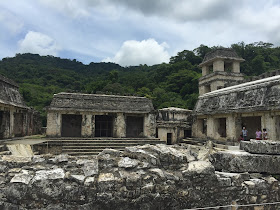10) Crested Caracara When my friend David Harrison found this first Hunterdon County record, I was hanging out with friends at the Princeton University Art Museum. By the time I was able to get to Holland Township to look for the bird, it was too late in the day. Another all day search came up empty. Finally on my third attempt, I was able to see this bird fly by in the fog and rain. A great new addition to my county list. Thanks, David!
9) Barn Owl At the start of the year this may have been my most wanted Hunterdon County bird. I'd chased one a couple times and missed, and there were no publicly available sites to find these birds. So in February when a pair were seen feeding over a field in Ringoes, I hoofed it down there and got some good looks at dusk. Most daytime sightings are of birds at a nest or roost, or of a bird flushed from a roost. So getting to watch them hunt was a really great.
8) Peregrine Falcon This isn't that rare of a bird, but I'd never seen one in my yard until this year when I saw two while conducting hawk watches in my yard. The second one was a nice adult bird that soared directly over my house. What a treat!
7) Wild Turkey Again, not a rare bird, but one that was on the top of my most wanted list for my yard this year. I had seen them within a couple miles of my home, but never in my neighborhood. One day as I was sitting working on my computer, I looked up and saw a hen turkey walking down along the edge of my yard. Nice yard bird!
 |
| Not a great shot, but the best I could manage as the turkey walked away |
6) White Hawk A stunning bird, one of my favorites from my Lacandon Maya trip in July. Several of these birds were seen soaring around Metzabok, the Lacandon Maya village where we worked.
5) Little Gull A regular visitor to Spruce Run in April, I didn't think I could get it for my yard list but when I heard that there were a couple consorting with Bonaparte's Gulls I got out my scope and spent the day scoping the area I could see to the west of the reservoir and was able to pick out a small dark-underwinged gull with a distant swirling group of Bonaparte's Gulls.
4) Mourning Warbler a new species for my yard this year, I was able to audio record a spring migrant bird and determine that it was from the Nova Scotia population.
 |
| Hear audio of the bird here |
3) Common Redpoll You can see photos and read how I used audio to attract this bird to my yard in a snowstorm here.
2) Thick-billed Murre My only new ABA bird for the year, when one showed up close to shore on the Jersey shore, I took a break from my backyard big year to chase this alcid. We got crummy looks at the bird as it moved farther offshore, so would definitely like to get better looks sometime.
1) Ornate Hawk-Eagle Perhaps my favorite new life bird from my Lacandon Maya research--I was able to snap this picture through my binoculars. A huge forest hawk with long plumes on its head. What's not to like?
Looking forward to a new year, to get out of my yard more, and to achieve some additional birding goals. I'm close to the 700 ABA milestone, so need to finally take care of that this year. Who knows what else the new year will bring!?!




















































